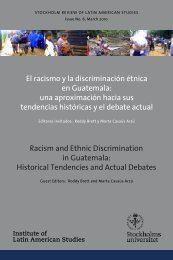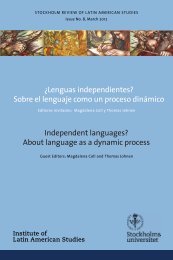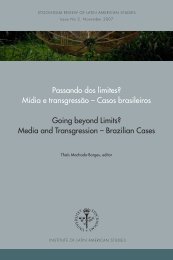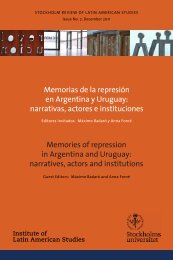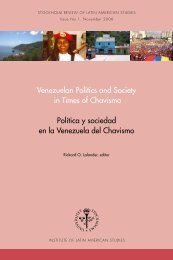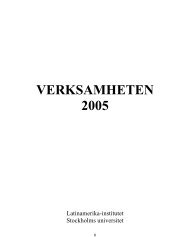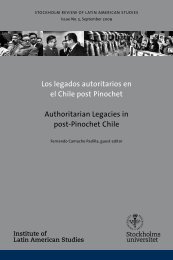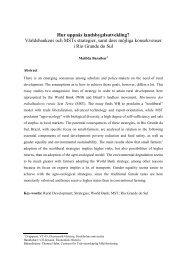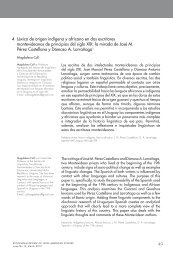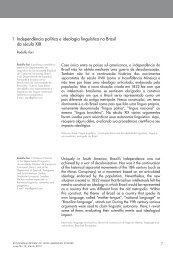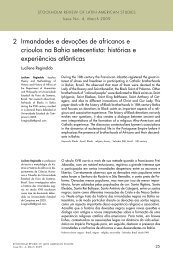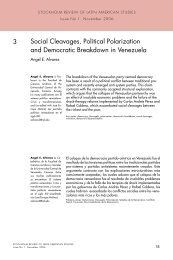Papers - Conference 2009 - Institute of Latin American Studies
Papers - Conference 2009 - Institute of Latin American Studies
Papers - Conference 2009 - Institute of Latin American Studies
You also want an ePaper? Increase the reach of your titles
YUMPU automatically turns print PDFs into web optimized ePapers that Google loves.
other actors engaged with the internally displaced. This normative framework wasdeveloped by the Representative <strong>of</strong> the Secretary-General on Internally DisplacedPersons at the request <strong>of</strong> the United Nations Commission on Human Rights andthe General Assembly. The actual Guiding Principles on Internal Displacementwere established by a team <strong>of</strong> international legal experts under theRepresentative's direction <strong>of</strong> Francis Deng, in consultation with a wide range <strong>of</strong>international organisations, non-governmental organisations and researchinstitutions worldwide. The Guiding Principles on Internal Displacement werepresented to the UN Commission on Human Rights in 1998. Since theirapprobation, it is assumed that they were included in the "constitutional block" inthe Colombian legal system, as well as the Constitution. This is an importantaspect, which increases the value <strong>of</strong> these Guiding Principles on InternalDisplacement that in other legal systems are not binding, but in that <strong>of</strong> Colombiahave compulsory force at the same time as being an excellent contribution toprotect fundamental rights <strong>of</strong> displaced people.At domestic level, law 387 <strong>of</strong> 1997 defines the desplazados as a person who hasbeen forced to migrate within the national territory, abandoning his/her place <strong>of</strong>residence or customary economic activities, because his/her life, physicalintegrity, personal freedom or safety have been violated or is directly threatenedas a result <strong>of</strong> any <strong>of</strong> the following situations: internal armed conflict, civil tensionand disturbances, general violence, massive human rights violations, infringement<strong>of</strong> international humanitarian law, or other circumstances arising from theforegoing situations that drastically disturb or could drastically disturb the publicorder. The Corte Constitucional contribution to the definition <strong>of</strong> a displacedperson is one given by case law T-027 <strong>of</strong> 1997: in these terms, the CorteConstitucional stated that the status <strong>of</strong> displacement needs to have two basicelements: forced migration, or migration without a person's consent, andmigration without passing international borders. With these two conditions met,there is no reasonable doubt that this is a case <strong>of</strong> internal displacement. The CorteConstitucional underlines the displacement phenomenon as a de facto condition,and that the government should prefer the expansive interpretation <strong>of</strong>8



